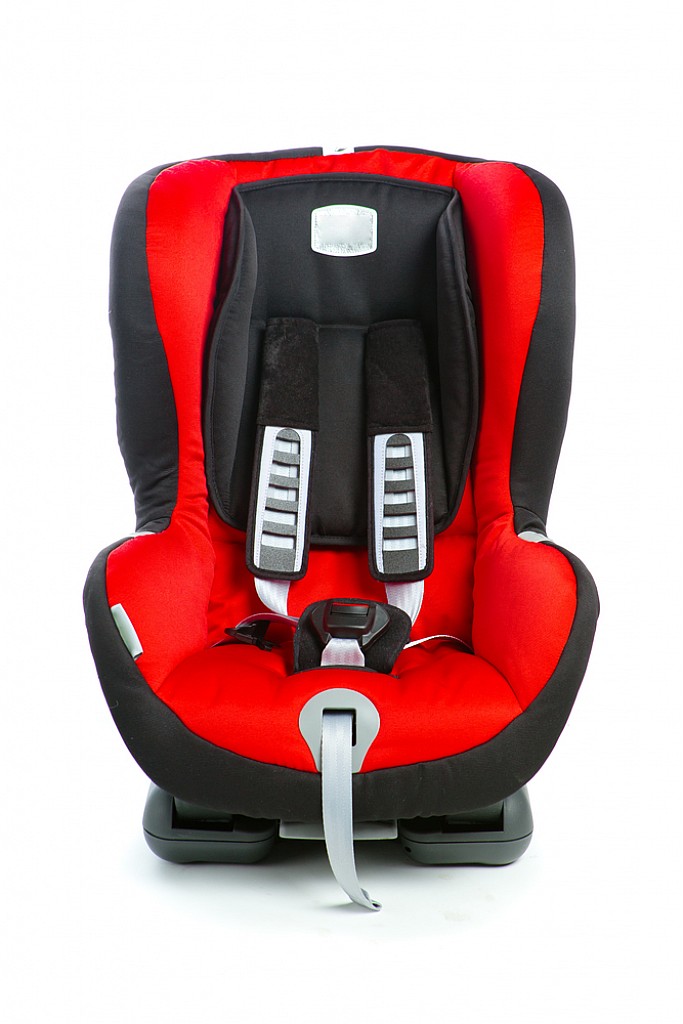
Car manufacturers may integrate child safety seats directly into their vehicle's design. Most commonly, these seats are purchased and installed by consumers. Many regions require children defined by age, weight, and/or height to use a government-approved child safety seat when riding in a vehicle. Child safety seats provide passive restraints and must be properly used to be effective. However, many child safety restraints in countries such as Canada and the United States are not used properly.[1] To tackle this negative trend, health officials and child safety experts produce child safety videos to teach proper car seat installation to parents and caregivers.

Baby car seats are legally required in many countries, including the United States, to safely transport children up to the age of 2 or more years in cars and other vehicles.
Other car seats, also known as "booster seats," are required until the child is large enough to use an adult seat belt. This is usually, but not always, when the child is 1.45m (4 ft 9 in) tall. The child needs to meet five criteria before moving out of the booster seat, including the child's seating position, shoulder belt position, lap belt position, knee position, and ability to sit properly for the length of the trip.
Child safety seats are seats designed specifically to protect children from injury or death during collisions.
A toy is an item that can be used for play. Toys are generally played with by children and pets. Playing with toys is an enjoyable means of training the young for life in society. Different materials are used to make toys enjoyable to both young and old. Many items are designed to serve as toys, but goods produced for other purposes can also be used.
A TOY IS AN ITEM THAT CAN BE USED FOR PLAY. TOYS ARE GENERALLY PLAYED WITH BY CHILDREN AND PETS. PLAYING WITH TOYS IS AN ENJOYABLE MEANS OF TRAINING THE YOUNG FOR LIFE IN SOCIETY. DIFFERENT MATERIALS ARE USED TO MAKE TOYS ENJOYABLE TO BOTH YOUNG AND OLD. MANY ITEMS ARE DESIGNED TO SERVE AS TOYS, BUT GOODS PRODUCED FOR OTHER PURPOSES CAN ALSO BE USED.
A DIAPER IS A TYPE OF UNDERWEAR THAT ALLOWS ONE TO DEFECATE OR URINATE, WITHOUT THE USE OF A TOILET.
Various methods of baby transport have been used across different cultures and periods and for different ages of child. Methods can be divided between wheeled devices including baby carriages (carrycots in British English), strollers (pushchairs), slings, backpacks, baskets, infant car seats and bicycle carriers.
CHILD SAFETY SEATS ARE SEATS DESIGNED SPECIFICALLY TO PROTECT CHILDREN FROM INJURY OR DEATH DURING COLLISIONS.